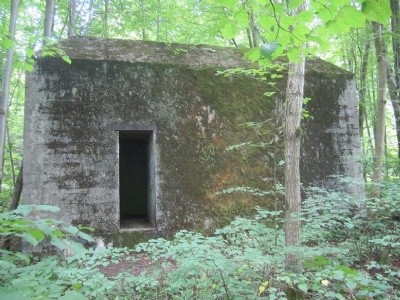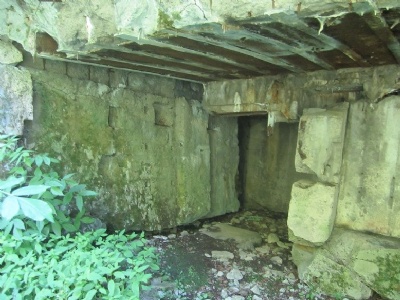Radzieje
Just east of Radzieje, about twenty kilometres northeast of Hitler’s military headquarters Wolfschanze, chief of Reich chancellery, Hans Lammers, had his headquarter. The place was called Wendula and consisted of two bunkers and a small number of barracks. The fact that Lammers headquarters was located outside Wolfschanze was because Hitler wanted to spread out the German leadership for security reasons. If Wolfschanze was subjected to a devastating bomb attack, the entire Nazi leadership would not risk being knocked out by having it spread out at different locations. But at the same time close to eachother if they needed to get in touch with eachother.
Current status: Demolished (2013).
Location: 54° 08' 51.84" N 21° 35' 43.10" E
Get there: Car.
Follow up in books: Kershaw, Ian: Hitler – A Biography (2008).





The place is located about 500 – 600 meters from the road and the gravel road that leads up to the bunkers are in poor condition. Some of the bunkers and ruins are surrounded by dense vegetation summer time and not easy to find. Stinging nettles also do not make it easy to get around.
Lammers was appointed as head of the Reich chancellery, January 30, 1933, and came to be in charge of all communication and advice between the political departments. In 1937 he became a member of Hitler’s cabinet and from 1939 a member of the ministerial board for the national defense. As such, he had access to documents relating to national security before they reached Hitler. From January 1943, Lammers served as Hitler’s deputy at cabinet meetings and, together with Hitler’s personal secretary, Martin Bormann, checked who was to be auditioned at Hitler. Same year, Bormann, together with Lammers and cief of OKW, Wilhelm Keitel, tried to create a group that would control the home front.
But other prominent figures in Nazi top hierarchy, such as Goebbels, Goering, Speer and Himmler saw them as a threat to their own positions and did everything they could to split it. But the trio had in fact their own ambitions and could never agree. After the attempt on Hitler’s life in July 1944, Lammers power was increasingly taken over by Bormann and his position became more or less insignificant. After the war, he testified in the Nuremberg Trial, and in 1949 he was tried in the ministerial trial and sentenced to twenty years in prison, but was released as early as 1952. He died 1962 in Düsseldorf at the age of 82.